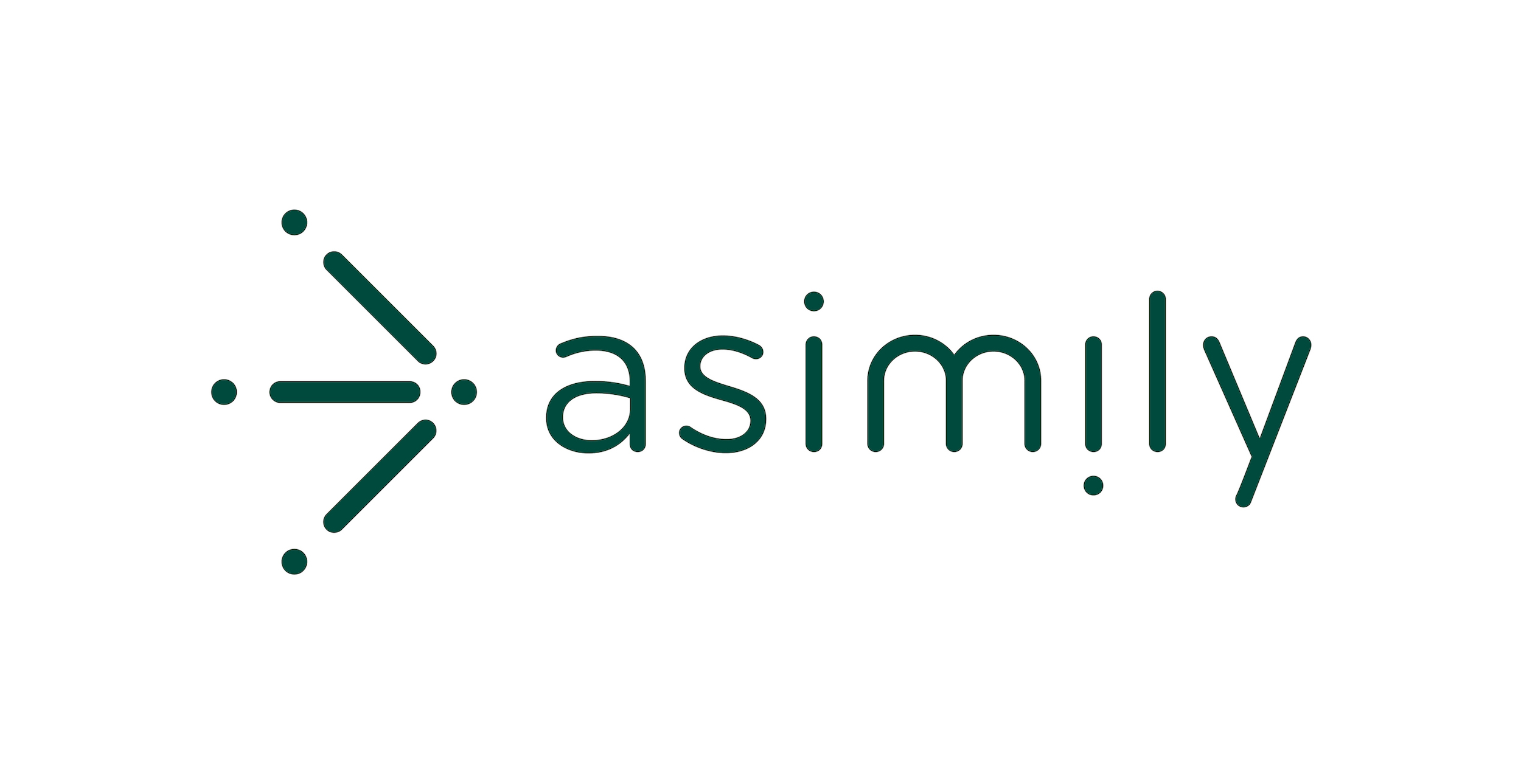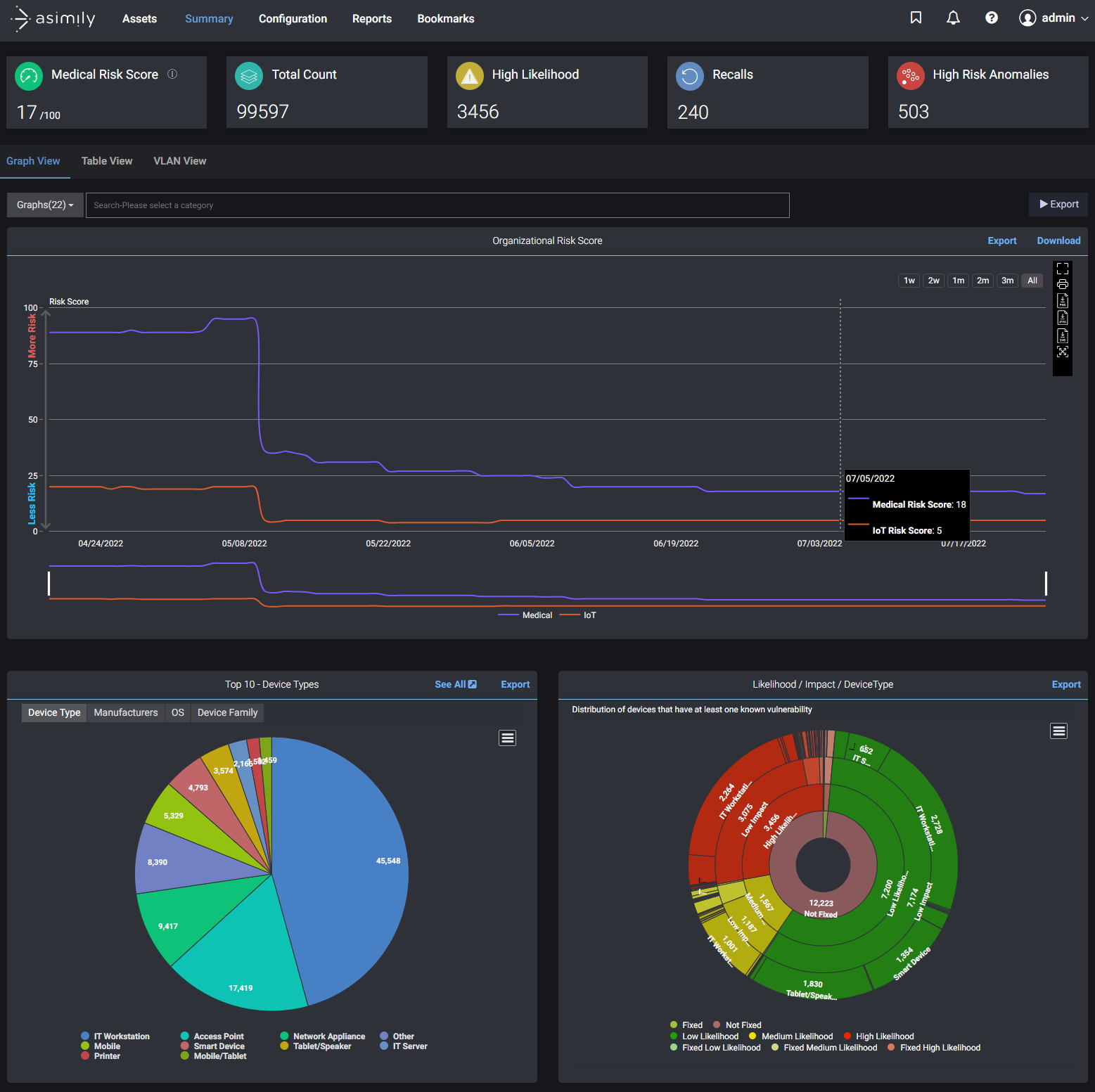Photo Gallery
 |

 |
Asimily



Additional Info
| Company | Asimily |
| Company size | 100 - 499 employees |
| World Region | North America |
| Website | https://asimily.com/ |
NOMINATION HIGHLIGHTS
Asimily’s IoT security product works to secure Internet of Medical Things devices—the absolutely critical internet-connected devices and equipment used by hospitals, diagnostic, life sciences, pharmaceutical, and other healthcare organizations to deliver patient care.
Through sophisticated IoT device scanning, Asimily’s platform discovers and classifies all connected devices, with the largest repository of device metadata and capability information. Using Asimily’s proprietary machine learning-based technology, Asimily predicts which devices are most critical, and which are most likely to face a successful attack. Asimily baselines and profiles device behavior, and detects network anomalies that could indicate a potential compromise or exhibit insecure behavior that could precipitate one. Additionally, Asimily tracks device utilization and active recalls, so healthcare organizations can ensure that assets are being allocated efficiently. Asimily helps healthcare organizations—like hospitals—defend their organization, increase IoT device availability and uptime, reduce operational expenses, and achieve compliance with healthcare security standards.
Key Capabilities / Features
Inventory: Asimily identifies all IoT devices in the network for healthcare organizations, including medical, IoT devices, and traditional IT workstations and servers. Detailed parameters such as the device's exact model and software version are provided for the most complete and accurate inventory.
Vulnerability Management: The solution discovers devices and understands which ones have vulnerabilities with a high likelihood of exploitation. Devices are prioritized using this likelihood and the impact that a breach of the particular device would have, based on Asimily's understanding of the device's purpose and the type of data it handles.
Anomaly & Threat Detection: Asimily monitors and detects misconfigurations, attacks, zero-day vulnerabilities, and anomalous behavior from IoT devices. A number of alerting options are provided, including integration with major SIEM vendors.
Mitigation: For every vulnerability, the solution provides recommendations for mitigation measures that will reduce or eliminate the risk, including when patching or segmentation is not possible. Additionally, Asimily integrates with major NAC and firewall solutions to block, segment, or micro-segment devices on the network, and can apply those policies automatically if desired.
Forensic Analysis: Asimily can show the healthcare organizations which devices are communicating, which services are being used, how much data is being transferred, and other factors to help with forensic analysis. This helps the HDO identify the root cause of a problem in the case of an anomaly or threat. If any network anomalies are detected, it can automatically capture network traffic of the device behaving abnormally and save it for offline analysis.
Policy Management: In addition to anomaly and threat detection, policy management allows healthcare organizations to set a policy on any device on any parameter, giving them 100% visibility across 100% of their devices against their own internal metrics and rules.
How we are different
- Through sophisticated passive scanning, Asimily discovers and classifies all IoT devices and equipment within a healthcare organization, with the largest repository of device metadata and capability information.
- Using Asimily’s proprietary machine learning-based technology, Asimily predicts which healthcare IoT devices are most critical, and which are most vulnerable to a successful attack. Asimily baselines and profiles device behavior, and detects network anomalies that could indicate a potential compromise or exhibit insecure behavior that could precipitate one.
- Asimily tracks device utilization and active recalls, so healthcare organizations can ensure that assets are always being allocated efficiently. Doing so enables healthcare organizations to defend their organization, increase device availability and uptime, reduce operational expenses, and achieve compliance with healthcare security standards.

Vote by Sharing
- Like
- Digg
- Tumblr
- VKontakte
- Buffer
- Love This
- Odnoklassniki
- Meneame
- Blogger
- Amazon
- Yahoo Mail
- Gmail
- AOL
- Newsvine
- HackerNews
- Evernote
- MySpace
- Mail.ru
- Viadeo
- Line
- Comments
- SMS
- Viber
- Telegram
- Subscribe
- Facebook Messenger
- Kakao
- LiveJournal
- Yammer
- Edgar
- Fintel
- Mix
- Instapaper
- Copy Link
Each completed social share counts as a vote for this award nomination.



